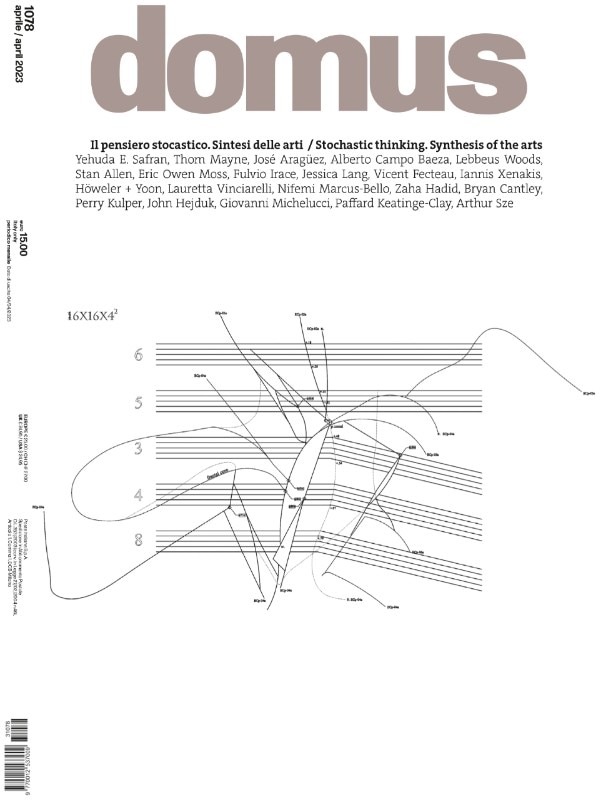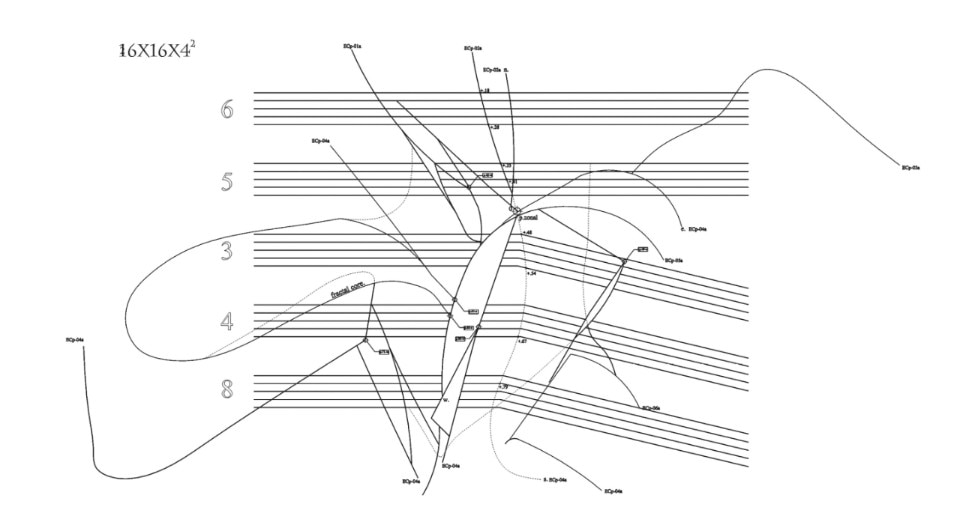“I can’t understand why people are frightened of new ideas. I’m frightened of the old ones”.
John Cage
Among the false boundaries separating architecture, sculpture, painting and music, there exists a blurred zone of exciting potential. This fuzzy atmosphere promises the eminence of the new: the undetermined beginning, pregnant with imaginational force.
Stochastic thinking in architecture has introduced new potentials in the 21st century. Instead of a deterministic thought process, stochastic thinking opens to the unpredictable. Stochastic thinking embraces uncertainty and is at the heart of a creative process; it is how ideas emerge. Stochastic behaviour is non-deterministic. We are finally free of dogmatic theories of rationalism, postmodernism, deconstruction and parametricism. We are curious; we search for a beginning; we imagine an idea that drives the design.
Creative tension at the outset of a project begins when embracing the real demands of a building programme with the joy of conceptual openness. The particular place – the climate, cultural foundation and history of a place – provides a beginning that can provoke an idea and build meanings into a site with stochastic thinking. The urgent need is for meaningful architecture, as the poet Osip Mandelstam said, “We need poetry like we need bread.” Eric Kandel, MD, in his book Reductionism in Art and Brain Science, argues via neuroscience that the brain needs abstraction. The internal mechanisms with which we see and experience visual and physical phenomena depend on a bottom-up approach – building up from elements of abstraction. The opposite, top-down approach of given figuration stifles necessary imagination.

Stochastic behaviour is non-deterministic. We are finally free of dogmatic theories of rationalism, postmodernism, deconstruction and parametricism. We are curious; we search for a beginning; we imagine an idea that drives the design.
The idea that the mind needs abstraction to throw open the range of its thought capacity is fundamental to art and architecture. The reverie of light and space of an inspiring room, the glossy surface of plaster against stone, or the flicker of sunlight on water are all abstract in essence. Stochastic thinking suggests an interconnected ecosystem of architecture together with all of the arts to achieve new levels of correlation.
This issue of Domus proposes a reflection on Villa Mâche by stochastic thinker Iannis Xenakis (1922-2001). Trained as an architect and engineer, Xenakis worked with Le Corbusier from 1947 to 1960. I met Xenakis at his Carnegie Hall concert staged with a huge orchestra performing Dmaathen, with one of the most difficult percussion parts ever written. From my high balcony seat, I spotted Xenakis in the second row and I went down to speak with him at the conclusion. Introducing myself as an architect, I said, “I read about your music-inspired fenestration at Le Corbusier’s La Tourette… You are one of the only architects he ever gave partial design credit to in his writings.” Xenakis, with a big smile on his scarred face while shaking my hand, said, “I designed La Tourette!” With a synthesis of stochastic thinking intertwining architecture, mathematics and music, Xenakis invented the concept of “mass sounds” in music. His stochastic and symbolic music through induction used set theory and probability calculus in music composition. In mathematics, stochastic thinking and processes are key in probability theory. “Probability” is a combination of probare, to test, and ilis, able to be. Curiosity, imagination and unpredictability hold the power to ignite intuition. Aims coalesce and intuition flows as the joy of making art and architecture expands. The second law of thermodynamics establishes that all systems inevitably tend towards a state of increased entropy. We counter this scientific fact with our creative acts. The creative act, the opposite of entropy, puts energy back into our world.
Opening image: Crop of Domus 1078 cover, April 2023. David H. Sin, 2008, inspired by György Ligeti, concerto for Violin and Orchestra 1.


